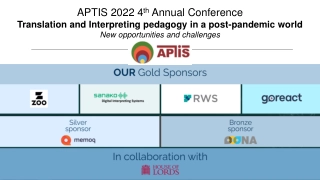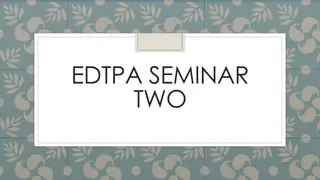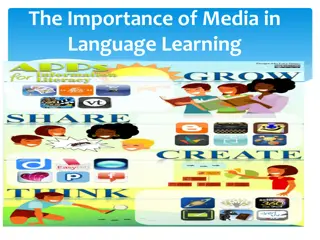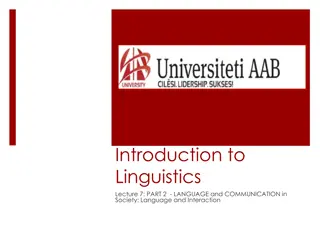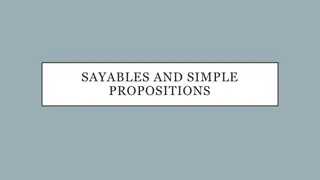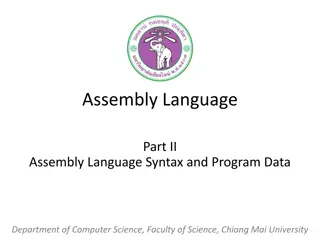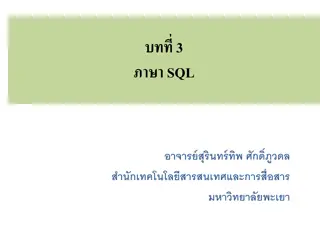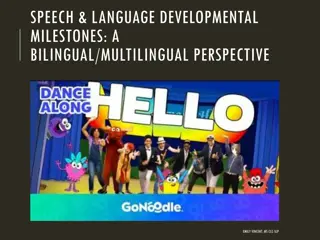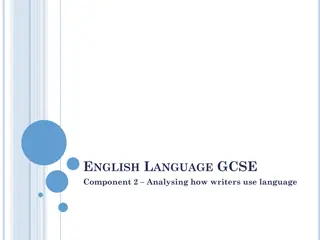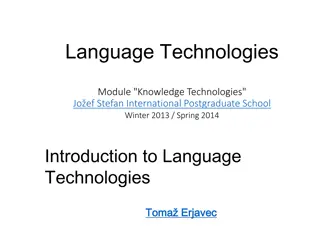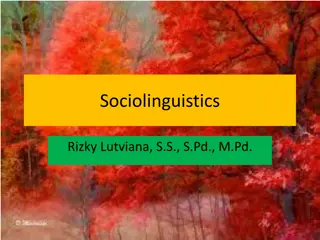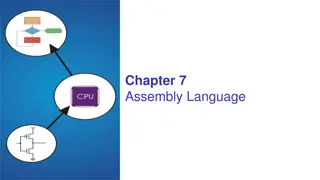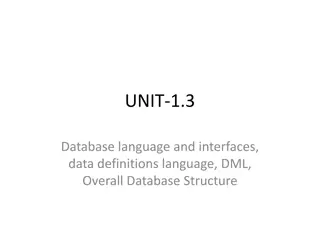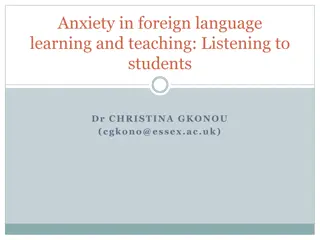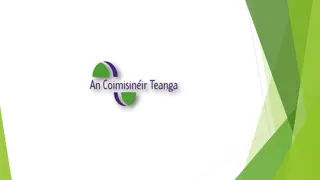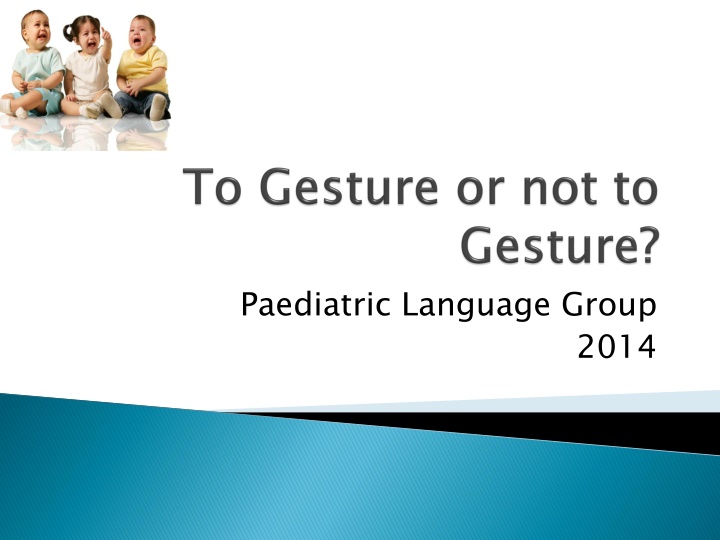
Role of Gesture in Early Language Development
This content explores the impact of parental use of gestures on children's acquisition of language skills. It discusses the types of gestures, naturalistic observations of parent-child interactions, the relationship between gestures and vocabulary development, and the progression of gesture-speech combinations in language development. The findings highlight the importance of gestures in early language learning and the influence of parent-child interaction on children's language abilities.
Download Presentation

Please find below an Image/Link to download the presentation.
The content on the website is provided AS IS for your information and personal use only. It may not be sold, licensed, or shared on other websites without obtaining consent from the author. If you encounter any issues during the download, it is possible that the publisher has removed the file from their server.
You are allowed to download the files provided on this website for personal or commercial use, subject to the condition that they are used lawfully. All files are the property of their respective owners.
The content on the website is provided AS IS for your information and personal use only. It may not be sold, licensed, or shared on other websites without obtaining consent from the author.
E N D
Presentation Transcript
In children <3, does parent use of gesture result in faster acquisition of words compared to verbal input alone? In children <3, does parent use of gesture result in faster acquisition of words compared to verbal input alone?
Types of Gestures Parent use of gesture Child response Child use of gesture Parent response Deictic (pointing) Conventional (convey culturally appropriate gestures with prescribed gesture forms e.g. shaking a head sideways to convey negation, open palm for give , waving) Tally Number of Deictic gestures used by parents Number of Deictic gestures used by children Number of conventional gestures used by parents Number of conventional gestures used by children Number of iconic gestures used by parents Number of iconic gestures used by children Iconic - (convey actions and attributes e.g. cupped hands to indicate roundness of a ball)natural sign, all gone/drink) Other
Naturalistic observations of parent- child interactions Longitudinal studies Few intervention studies
Relationship between and Small and reliable tendency for gestures to develop earlier than first words (Goodwyn & Acredolo, 1993) At 14-16 months children use more gestures than speech (Ozcaliskan, 2005) Gesture and speech increase over time. Significant increase in number of gestures between 14 and 24 months (Ozcaliskan, 2009) Relationship between child use of gesture and early vocabulary development child use of gesture early vocabulary development
Gesture + Speech combinations increase following first words Supplementary gesture-speech combinations precede first words Drop in gesture use from 26 mo as preference for verbal modality (Ozcaliskan 2005 & 2009)
Relationship between and Parents produce models for different types of gestures and gesture-speech combinations they want their child to use Between 14-26 months, the type of gestures children use mirror that of their parents Parent use of gesture often has a different role to child use of gesture (Ozcaliskan, 2005) Evidence for a gestural motherese (Ozcaliskan 2005 & 2013) Relationship between parent use of gesture and child use of gesture and language parent use of gesture child use of gesture and language
Relationship between and Mothers use of pointing when child 16 months old correlated with child vocabulary size at 20 months. Maternal pointing at 20 months also correlated with child s gesture production at 20 months (Iverson, 1999) Relationship between parent use of gesture and child use of gesture and language parent use of gesture child use of gesture and language Parent using more gesture = child using more gesture (Rowe et al, 2009)
Development of gestures and receptive vocab in the second year of life have good predictive value for poor language at 2 (Suvi Stolt, 2014) At 14 months of age child use of gesture is a predictor of vocabulary at 42 months (Rowe et al, 2008) The effect of SES on child vocab at 54 months is impacted upon by the child s use of gesture at 14 months (Rowe et al 2009)
Child sign vocabulary is positively associated to mothers attunement to child affect. More signs in child s vocabulary = more attuned mothers were to changes in child affect Sign training intervention increased maternal response to child distress cues (Valotten, 2012)
In children aged 10-24 months mothers translation of child gestures = positive impact on language acquisition. Mothers translation of child gesture increases likelihood of the words becoming part of the child s spoken vocabulary (Goldin Meadow & Goodrich, 2007)
Sign input from parents fosters receptive language development Sign input from parents significantly improves expressive language at 15 and 24 months of age (19, 30 and 36 approaching significance) More gesture = more for caregivers to respond to = more rapid language development Goodwyn, Acredlo and Brown (2000)
Acquisition of new words for children with and without SLI is improved with... - slower speaking rate - the use of gesture with spoken language No significant effects for changing stress Use of gesture improves comprehension Ellis Weismer (1993)
Gesture is good for... Improving expressive language skills Fostering receptive language skills Promoting parent child responsiveness Is best measured early in the second year as a predictor of language development Gesture is a precursor to first words and gesture + sign is a precursor to combinations There must be underlying cognitive skills in place to develop gesture (memory, categorisation and symbolisation)
Parental responsiveness Low SES groups Best to assess gesture after 12 months Gesture + verbal input = best outcome for language development
2014 CAPs completed O Toole & Chiat (2006) Symbolic functioning and language development in children with Down Syndrome Vallotton (2012) Infant signs as intervention? Promoting symbolic gestures for preverbal children in low-income families supports responsive parent-child relationships, Early Childhood Research Quarterly, 2012, 401-415 Goodwin, Acredolo & Brown (2000) Impact of Symbolic Gesturing on Early Language Development Ozcaliskan & Goldin-Meadow (2005) Do parents lead children by the hand? Goodwyn & Acredolo (1993) Symbolic Gesture vs Word Goldin-Meadow, Woodrich et al (2007) Young children use their hands to tell their mothers what to say
Rowe& Goldin-Meadow (2009) Differences in early gesture explain SES disparities in child vocabulary size at school entry Ozcaliskan S. & Goldin-Meadow, S (2009) When gesture speech combinations do and do not index linguistic change Iverson, J.M., Capircio, Longobardi E., Caselli M. Gesturing in mother-child interactions Stolt S., Makila, A. et al (2014) The development and predictive value of gestures in very-low-birth-weight children: a longitudinal study Weismer (1993). The influence of prosodic and gestural cues on novel word acquisition by children with SLI Background reading: Ozcaliskan & Dimotrova (2013 How Gesture Input Provides a Helping Hand to Language Development, Seminars in speech and language, 34, 4
Topic: TBC Watch this space! jessica.waters@sswahs.nsw.gov.au maryfalco@lifestart.org.au

